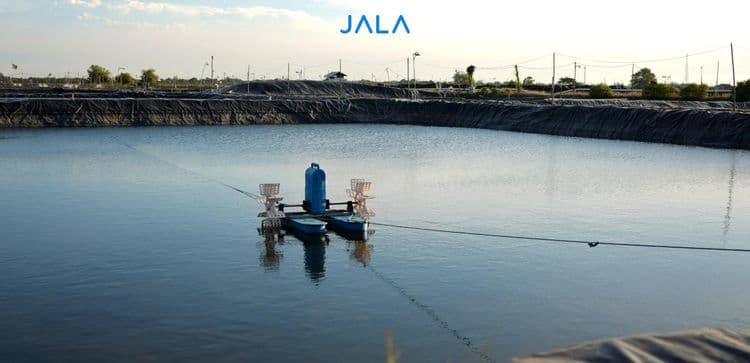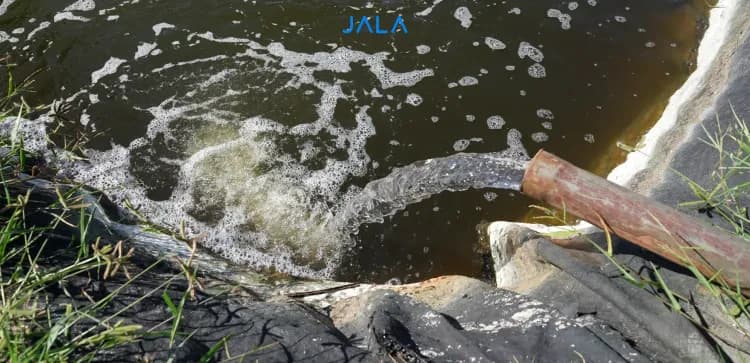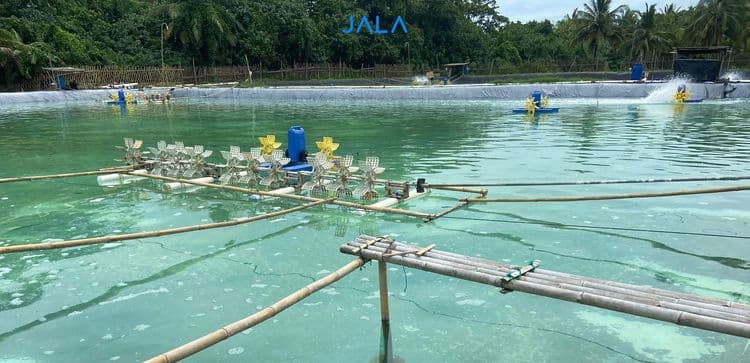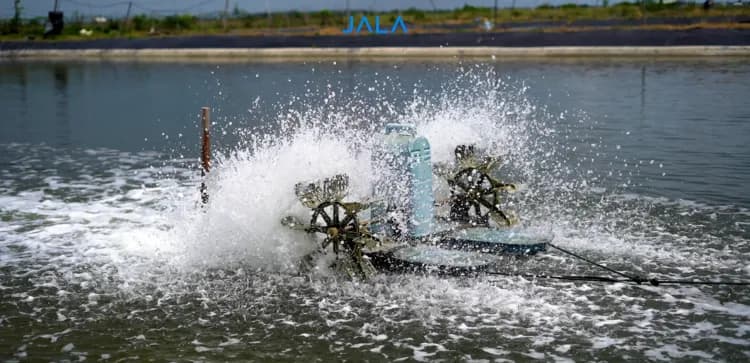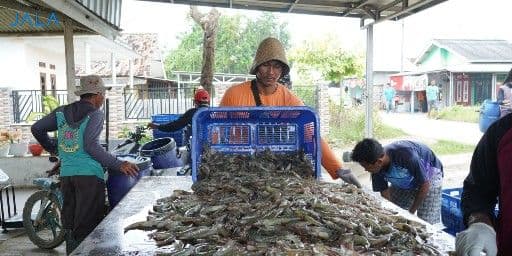
Harvest is the most awaited time for farmers to reap actual results from all their cultivation efforts. It is also a moment to evaluate whether the implemented cultivation SOP has run well or needs further improvement. Farmers who decide to harvest shrimp have made at least two considerations: technical and business.
Determining the right harvesting time for farmers might rely on different preferences. Some of the general aspects to consider before deciding to harvest are:
- Assess water quality stability
- Check feeding trays or do sampling do ensure size, biomass, and shrimp quality estimates
- Monitor the latest shrimp prices
- Find shrimp buyers
Evaluate feed management effectiveness and shrimp growth response
Many farmers target their harvest after 100-120 days of cultivating shrimp or reaching a size of 20-40 g/shrimp, which is the marketable size for shrimp. The desired shrimp size can be reached through the implemented feed program. However, some factors might hinder feed programs from going well, such as a less-than-optimum shrimp growth response.
If the shrimp does not respond well to the feed program and does not grow optimally, re-evaluation is needed. This can be done by assessing the water quality condition, weather, or shrimp health.
You can monitor your shrimp growth progress through graphs by adjusting actual conditions (blue line) and growth target (orange line).
 To see the effectiveness of a feeding program on shrimp growth, you also need to evaluate the feed. If the daily feed always increases, but shrimp growth tends to stagnate. Thus, it is necessary to evaluate other factors that may have an influence.
To see the effectiveness of a feeding program on shrimp growth, you also need to evaluate the feed. If the daily feed always increases, but shrimp growth tends to stagnate. Thus, it is necessary to evaluate other factors that may have an influence.
 If the root cause is found, solve it immediately to prevent the feed conversion ratio (FCR) from increasing too high.
If the root cause is found, solve it immediately to prevent the feed conversion ratio (FCR) from increasing too high.
Consider water quality stability
Suitable water conditions will help shrimp to survive and grow optimally, enabling farmers to reach their cultivation target more quickly. Ideally, a stable water quality helps farmers to determine harvesting time according to the shrimp’s targeted age or size. In contrast, if water quality drops, shrimp growth is threatened, and shrimp mortality is imminent.
Poor water quality threatens shrimp health. In some cases, farmers might even be forced to do total harvest due to shrimp diseases. Proceeding with the cultivation in hopes that the shrimp will be treated or the water quality condition will improve might cause an even higher mortality rate. At this point, the cultivation no longer goes as planned.
One of the preventive measures that farmers can always do is regularly monitoring the water quality stability, including various physical, chemical, and biological parameters.
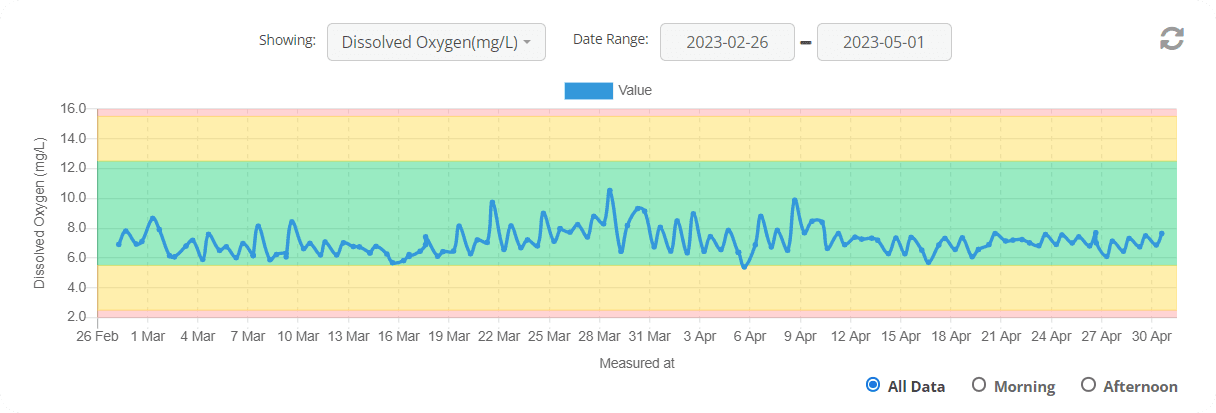 Check physical parameters such as temperature, pH, DO, salinity, and others.
Check physical parameters such as temperature, pH, DO, salinity, and others.
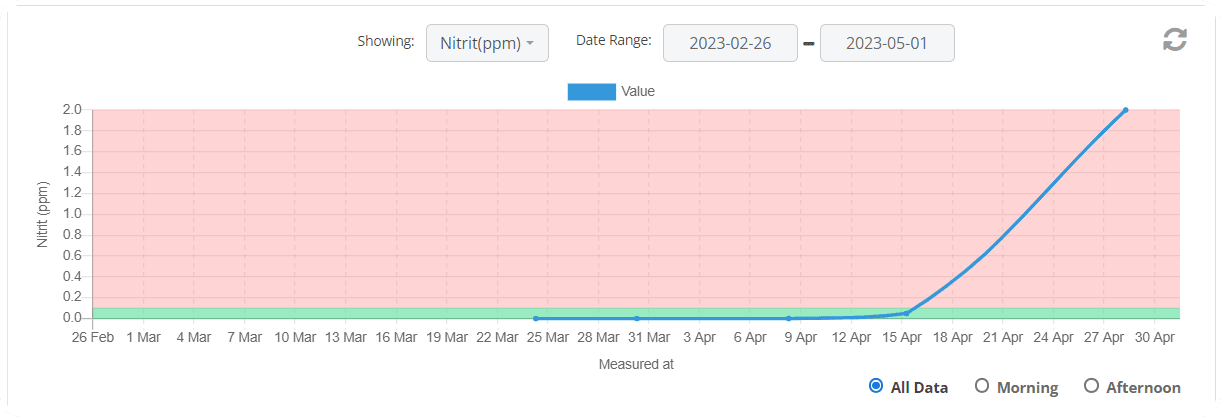 Check chemical parameters such as nitrate, nitrite, ammonia, and other chemical parameters.
Check chemical parameters such as nitrate, nitrite, ammonia, and other chemical parameters.
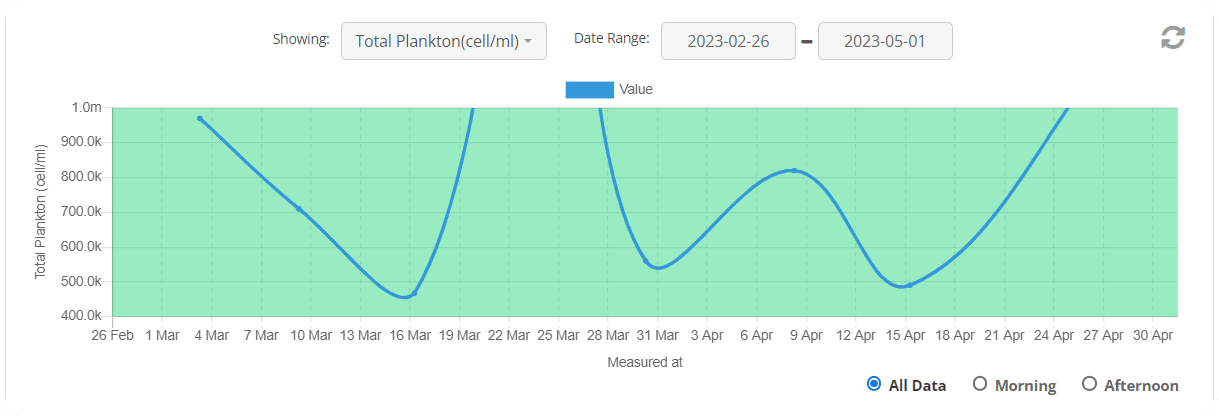 Check biological parameters such as total plankton, total bacteria, and so on.
Check biological parameters such as total plankton, total bacteria, and so on.
When water quality stability is disrupted, harvesting is one of the paths farmers can take, but only if they have attempted various treatments to fix the water quality. To minimize shrimp mortality, farmers can do partial or total harvesting based on these considerations.
For example, if initial stocking density is high and the pond’s carrying capacity has likely been exceeded, partial harvesting is more ideal. The remaining shrimp can still be cultivated to reach the final target.
Assessing pond carrying capacity
Carrying capacity is how much the surrounding environment can sustain existing life and growth. A shrimp farm with an ideal carrying capacity can be identified through an ideal ADG, stable water quality, and very little organic matter buildup.
Carrying capacity will usually decrease as cultivation age increases. One of the risks of a low carrying capacity is a greater risk of infection, especially due to high organic matter buildup. Partial harvest is one of the solutions to maintain an ideal carrying capacity, as at this point the shrimp biomass is more than the pond’s capacity.
 On JALA App, if your pond’s carrying capacity is exceeded, there will be a falling yellow line which recommends you to decrease biomass.
On JALA App, if your pond’s carrying capacity is exceeded, there will be a falling yellow line which recommends you to decrease biomass.
Partial harvest can be done with a frequency of 1-3 times per cycle at an interval of 7-10 days. The amount of harvested shrimp is determined by subtracting the estimate of shrimp that can be cultivated in the next 2 weeks based on average body weight (ABW) at partial harvest and the average daily growth (ADG) during sampling. The biomass of harvested shrimp in every partial harvest is 10-20% of the estimated shrimp biomass in the pond.
You can regularly monitor your most recent farm condition through JALA App, a shrimp farm management application. Register for free at app.jala.tech or download the app on Play Store or App Store.
The explanation above can be used to help make a decision for harvest based on different scenarios. If farmers have determined to harvest their shrimp, the next step is to check current shrimp prices. In shrimp farming, shrimp prices are highly fluctuate, as they are affected by supply and demand.
Larger-sized shrimp, or sizes above 40 shrimp/kg, have a relatively more stable price. Shrimp sizes with a marketable price usually start at size 100. With this size, farmers can consider their farm profitable. However, farmers tend to go for larger sizes up to 30. The larger the shrimp, the higher the price. This consideration needs to be done with careful production cost calculation, as a longer cultivation takes up larger costs. The calculations need to ensure that farmers reach optimum profit.
Shrimp prices vary in different regions and off-takers. Hence, choosing the right time and off-taker is the next important step in determining harvest.
Choosing the right off-takers for your harvest
The current shrimp price landscape is an important factor for farmers in deciding when to harvest and whom to sell their harvest to. Don’t choose buyers simply because they offer the highest price, but also consider the security of the transaction and proper harvesting methods. Make sure buyers also have a good track record.
The most ideal payment method is cash, especially when it comes to new buyers. However, if you trust your buyers enough and have done several transactions with them, you may consider payments with a due date. In choosing harvesting method techniques, choose buyers that prioritize transparency, including the sampling process for shrimp quality and size, scale accuracy, weighing process, and payment.
Choose JALA Harvest: The best choice to sell your cultivation harvest production
JALA ensures to meet your expectations, offer a secure and reliable transaction, and prioritize the best harvesting methods. Payments for your harvested shrimp are also done more quickly and securely as they are given as soon as the harvesting process is complete. Harvest can be done any time in various regions in Indonesia.
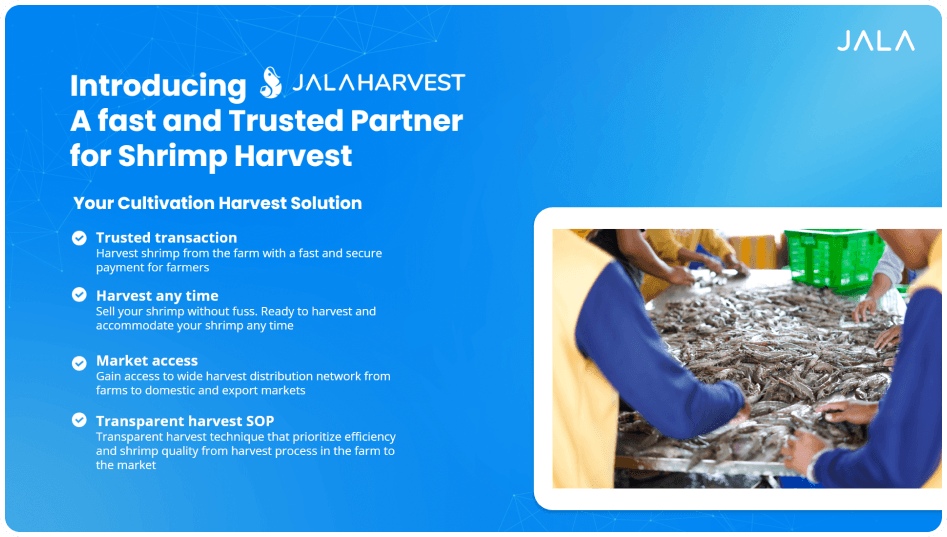 Find the price offer using the JALA Tech Shrimp Price feature (harga.jala.tech) or contact 0813-2551-4194 if you have any questions.
Find the price offer using the JALA Tech Shrimp Price feature (harga.jala.tech) or contact 0813-2551-4194 if you have any questions.
— Those are the important considerations in choosing harvesting time. In regards to harvesting time, harvesting is best done in the morning or evening, both partially or totally. Harvesting needs to be done quickly and efficiently to maintain shrimp quality.
Shrimp harvesting is a quick process which can be done in a few hours, but affects the results of the whole 3-month cultivation process, especially shrimp quality. Proper harvesting methods will result in good quality shrimp.

